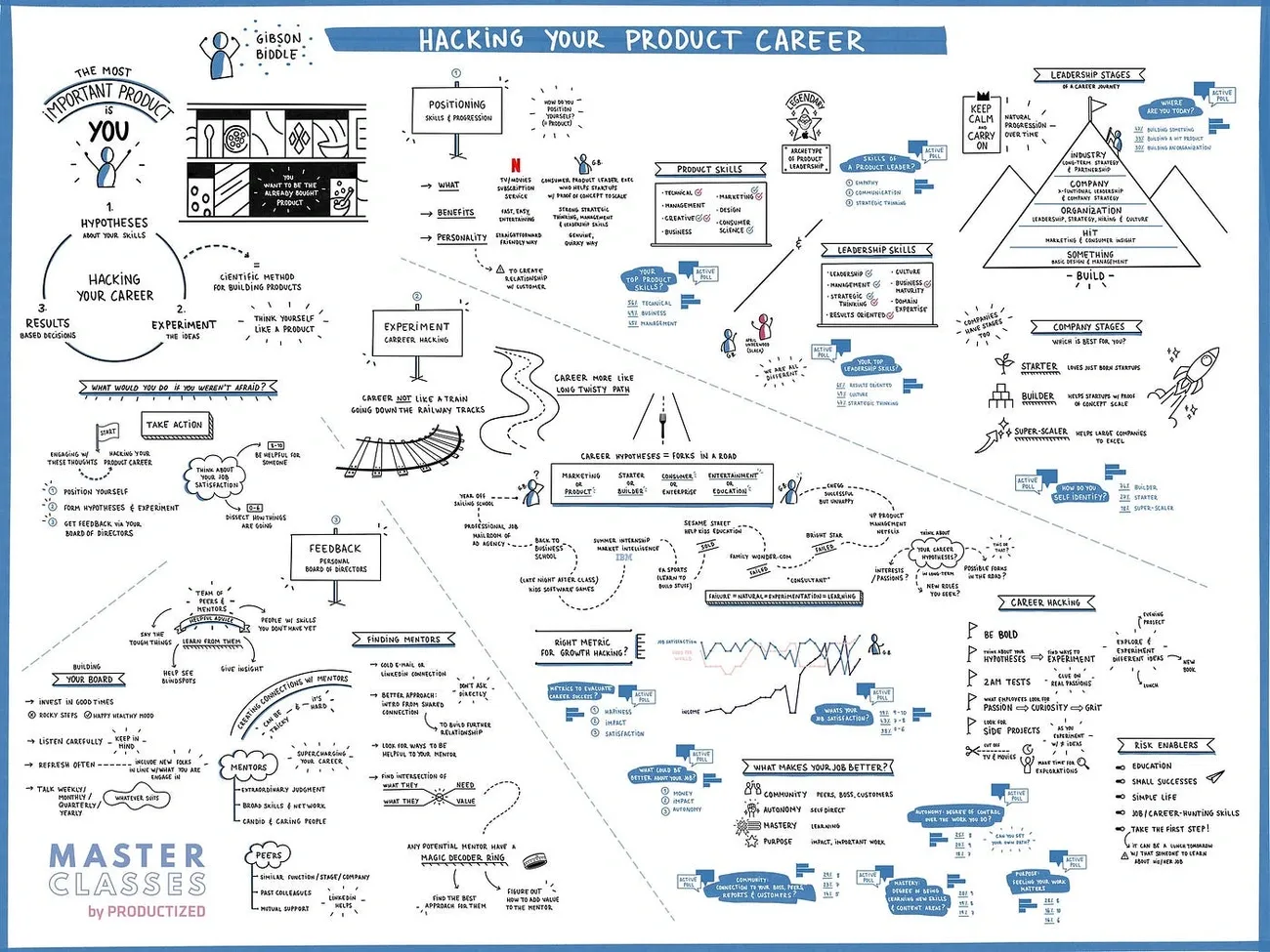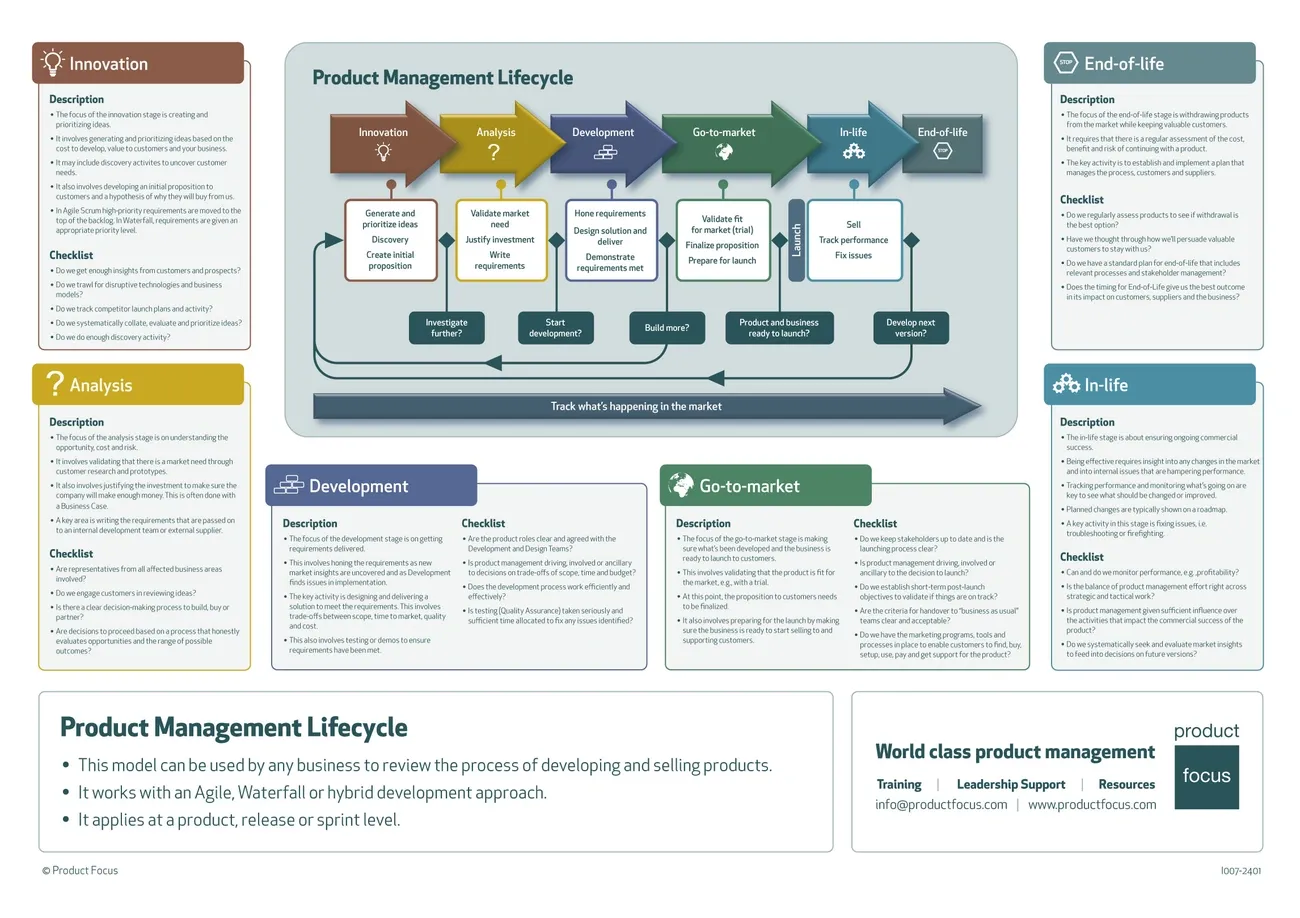How to Transition to Product Management in 2025: A Proven Roadmap for Ops Professionals

Product management stands out as a thriving field and ranks among the most sought-after tech careers today. The salary progression tells an exciting story – entry-level Associate Product Managers start at $80,000 yearly, and Product Directors can earn up to $200,000 annually. This career path offers an impressive growth opportunity that deserves your attention if you want to advance your career.
Making the switch to a PM position might seem daunting, especially without direct product management experience. The bright side? You don’t need extensive product management background to succeed in this role. Many successful product managers started their journeys in different areas like project management, software engineering, UX design, and business analysis. Your operations background might be more valuable than you realize.
Product managers serve as vital contributors to products and services’ success. Their responsibilities include feature definition and prioritization, team collaboration, market research execution, roadmap creation, product lifecycle management, and performance tracking. These tasks align well with the skills you’ve developed in operations.
The journey from entry-level PM to director typically spans 10 years. A well-laid-out approach can speed up your transition. This piece outlines a proven roadmap that will help you utilize your operations experience to launch your product management career in 2025.
Understand the Product Management Role
“All things aside, there is one role that all product managers play, and that is to be a problem solver. That’s what the product manager role is all about – finding out problems, figuring out the best ways to solve them, and increasing the business value in the process.”
— Josh Fechter, Co-founder of Product Manager HQ, product management educator
You should understand what a product management role actually involves before taking a closer look at this career path. Product management combines business, technology, and user experience in ways that other traditional positions don’t. This unique combination makes the role both challenging and rewarding.
What product managers actually do
Product managers lead product development through strategy, roadmaps, and feature definition. They spot customer needs and match them with business goals. A product manager’s success depends on turning vision into reality by motivating teams.
The product manager’s daily work typically covers three main areas:
- Connecting and communicating: They host core team meetings and work with support, sales, development, and marketing teams to stay in sync and collect feedback.
- Learning and analyzing: They check product performance metrics, track market trends, study usage data, and talk to customers to make informed decisions.
- Deciding and documenting: They record key findings, craft problem statements, keep product roadmaps current, and maintain backlogs to keep everyone informed.
On top of that, they watch the market, study competitors, shape product vision, bring stakeholders together, and rank features by importance. The role’s wide scope means each day brings something new.
How PMs differ from operations professionals
These roles support business success differently. Operations professionals streamline processes, cut costs, and keep daily operations running smoothly. They study workflows, spot bottlenecks, and boost productivity through targeted strategies.
Product managers focus on their products’ entire lifecycle. They look outward at market forces and customer needs instead of internal processes. The role needs deep knowledge of market dynamics, customer behavior, and product development, while operations professionals excel at improving efficiency and processes.
Moving between these roles means changing your viewpoint from internal improvements to market-driven innovation. Many skills transfer well, but you’ll need new perspectives.
Is product management right for you?
Product management won’t suit everyone. The role might not be your best choice if you struggle with constant change or tough decisions under pressure. You’ll face shifting market demands and customer needs, which can be stressful despite the role’s rewards.
Great product managers blend technical skills with business knowledge. Key abilities include:
- Clear communication with stakeholders of all types
- Active listening to grasp needs and wants
- Strong presentation skills
- Strategic thinking for documentation and decisions
The best product managers feel comfortable with uncertainty and love continuous learning. Your ability to juggle priorities while keeping a clear product vision will set you apart from others in the field.
Map Your Ops Skills to PM Responsibilities

Image Source: Gibson Biddle – Medium
Operations professionals have a rich set of skills that naturally fit product management responsibilities. A successful transition to product management depends on matching these existing capabilities to PM requirements and spotting areas that need development.
Transferable skills from operations
The core team from operations brings valuable competencies that build a strong foundation for product management success. Skills mapping shows how your current abilities match PM requirements. Your operational background probably has several of these essential PM skills:
- Data analysis and business analytics: Your experience with operational data analysis, pattern identification, and decision-making directly applies to product analytics needs in PM roles.
- Project management: Your experience with coordinating projects and teams has helped you develop planning, organization, and collaboration skills that apply directly to managing product development cycles.
- Communication and stakeholder management: Operations roles need you to work across teams, negotiate priorities, and manage expectations—these are significant skills for product managers who must arrange diverse stakeholders.
- Strategic thinking: Knowing how to review trade-offs, conduct cost-benefit analyzes, and understand business implications creates solid groundwork for product strategy development.
Common gaps and how to fill them
Operations professionals need to develop specific PM capabilities despite their many transferable skills. Common skill gaps include:
- Product strategy and development: Product lifecycles, roadmapping, and market analysis knowledge. You should think over enrolling in courses focused on these areas.
- User experience design: Understanding UX design principles helps you create products that meet customer needs.
- Persuasive communication: A survey of 72 MBA students pursuing product management revealed that confident presentations and data storytelling were challenging. Mock stakeholder presentations can strengthen this skill.
- Agile methodologies: Getting familiar with frameworks like Scrum or Kanban that product development teams use widely.
Real examples of successful transitions
Many professionals have moved from operations to product management by highlighting their unique value:
One operations specialist utilized their deep understanding of end-to-end supply chain processes to optimize product development and launch processes. They showed how their operational expertise helped with cost optimization and risk mitigation.
Another professional made the switch by becoming the trusted advisor for engineering and product teams. They effectively shared customer priorities and suggested solutions that matched business objectives.
Want to speed up your transition to product management? Book a slot with me for personalized guidance on matching your operations skills to product management opportunities.
Build Core Product Management Knowledge

Image Source: Product Focus
“Be stubborn on vision but flexible on details.”
— Jeff Bezos, Founder and Executive Chairman, Amazon
Successful transition to product management requires mastering specific knowledge areas beyond general business acumen. A deep understanding of product fundamentals are the foundations of your new career path.
Learn the product lifecycle
The product lifecycle has distinct phases that guide products from inception to retirement. The journey starts with concept and design where teams define requirements based on market gaps and customer needs. The development phase creates detailed designs and prototypes for testing. Products then move into production and launch with finalized designs scaled for market distribution. The final stages include service and support before eventual retirement.
This framework provides essential context for your product decisions as a PM.
Understand product strategy and roadmaps
A product roadmap acts as a shared source of truth that outlines vision, direction, and priorities over time. It shows not just what you’re building but why you’re building it. A well-crafted roadmap connects work across teams. It helps teams make autonomous decisions and aligns stakeholders around common goals by providing the “big picture”.
Your roadmaps should include clear objectives, timelines, features, and dependencies that link to your strategic vision.
Get familiar with user research and analytics
User research shapes product strategy by grounding decisions in actual user needs. The 2024 State of User Research Report shows that user research has evolved into a shared responsibility. Teams now handle 77% of research through embedded product or design functions.
PMs need expertise in two key areas:
- Qualitative research: Interviews, focus groups, and usability testing reveal user thoughts and motivations
- Quantitative research: Surveys, analytics, and A/B testing provide numerical data on behavior and priorities
Recommended courses and certifications
These respected programs help build your product management foundation:
Product School offers three certification levels tailored for different career stages. The programs cover fundamentals like assessing opportunities, building software products, and launch strategies. Pragmatic Institute’s courses deliver “usable skills, tools, and templates” from instructors with decades of product management experience.
AIPMM’s Certified Product Manager course includes 18 learning modules on core PM skills. PDMA’s NPD Professional Certification provides internationally recognized credentials.
[Insert image: A visual comparison of top product management certification paths]
Gain Hands-On Experience Before Applying
Product management positions need more than just theory. Your practical experience makes you stand out from other candidates. Ground experience shows you know how to apply concepts in real situations and connects theory with actual practice.
Start a side project or case study
The best way to show your PM skills is to build your own product or solve a real problem. Look at problems you face every day and create solutions using product management principles. This helps you practice your skills and gives you great portfolio pieces to show potential employers.
Here are some practical ideas you can try:
- Creating a mobile app that fixes a specific problem
- Redesigning a website to boost user experience
- Building a tool that makes workflows better
[Image: A visual showing the progression from problem identification to solution development in a side project]
Volunteer for cross-functional initiatives
Of course, volunteering projects are a great way to get experience and grow your network. You can find opportunities to work on real projects for nonprofits through sites like Taproot. Your current company might let you:
- Join project teams and help gather requirements
- Lead PM tasks for upcoming company events
- Watch current product managers work and learn from them
Join a product bootcamp or cohort
Product management bootcamps create intensive, well-laid-out learning spaces that mirror real-life experiences. Most programs run for 7-10 weeks and focus on using PM skills in practice. To name just one example, Co.Lab puts students into agile product teams where they work together from idea to MVP launch in eight weeks.
These bootcamps usually include:
- Live, interactive classes with experienced teachers
- Projects based on real problems
- Guidance from industry experts
- Career coaching and portfolio building
Whatever path you pick, your goal stays the same – you need hands-on experience that shows you know how to think and work like a product manager.
Create a Portfolio and Resume That Stand Out
Your portfolio and resume serve as powerful tools that showcase your readiness when you aim to break into product management. Standing out in this competitive field requires compelling materials that highlight your operational background and demonstrate your product thinking abilities.
What to include in a PM portfolio
A product manager portfolio showcases your experience and expertise through a detailed collection of work samples that recruiters can evaluate. Your portfolio provides visual evidence of your capabilities, unlike a resume. A portfolio that works should contain:
- Case studies showing problems you solved, your approach, and measurable results
- Product designs like user flows, wireframes, or prototypes
- Strategy documents such as PRDs, roadmaps, and competitor analyzes
- Data dashboards demonstrating your analytical skills
Operations professionals moving to product management should showcase projects where they collaborated across teams or delivered measurable process improvements.
How to write a PM-focused resume
Your work experience section stands as the most crucial and challenging part of a PM resume. Structure it in reverse chronological order with these approaches:
- Begin each bullet point with action verbs describing your responsibilities
- Add metrics to showcase achievements—”spearheaded user experience improvements based on customer feedback, leading to a 15% increase in satisfaction”
- Weave technical and soft skills into your experience descriptions
- Include keywords from job descriptions to clear ATS screening
Tailoring your story for hiring managers
Think of your transition story as a product narrative. Hiring managers need to understand what you’ve done and why you want this career change. Create a concise summary that spotlights your relevant achievements and skills.
Operations professionals should emphasize their background in process optimization, stakeholder management, and data analysis that prepared them for product management. Use product terminology where appropriate to show your PM mindset, regardless of your current title.
![PM Portfolio Structure showing case studies, design mockups, and analytics dashboards]
Apply Strategically and Prepare for Interviews
The last phase of your transition to product management needs strategic planning and full interview preparation. Your success in getting that first PM role depends on landing interviews with the right companies and preparing well.
Targeting the right roles and companies
Your job search should zero in on companies where operations professionals excel in product roles. Meta, Google, and Uber stand out as top companies for product managers. These companies offer unique product environments that go beyond just brand recognition. Look for roles that value cross-functional experience or operational background.
Moving internally makes sense if you can. Your company’s product team might offer mentorship opportunities when you show interest in transitioning. Associate Product Manager or Product Specialist positions usually serve as great starting points.
Using the STAR and CIRCLES frameworks
These two frameworks will help you tackle different types of PM interview questions:
The STAR method (Situation, Task, Action, Result) works best for behavioral questions. You’ll state your experiences clearly. The CIRCLES framework gives you a well-laid-out approach to product sense questions:
- Comprehend the situation
- Identify the customer
- Report customer needs
- Cut through prioritization
- List solutions
- Evaluate trade-offs
- Summarize recommendation
Common PM interview questions and how to answer them
PM interviews test six core skills: communication, collaboration, execution, strategy, effect, and product sense. You’ll face questions like:
- “Tell me about a time you disagreed with an engineer”
- “Pick a project you’re proud of and walk me through it”
- “How would you improve feature X in our product?”
Companies use structured interviews with consistent questions. This approach eliminates subjectivity and makes candidate comparisons clearer.
Leveraging your ops background in interviews
Your operations experience brings real value to the table. Marketing professionals understand audiences deeply. Sales professionals know how to spot customer pain points. Business analysts excel at breaking down complex processes.
Google’s X-Y-Z formula helps measure your achievements: “I accomplished [X], as measured by [Y], by doing [Z]”. This method shows your previous roles’ impact clearly.
Need individual-specific interview preparation? Book a slot with me for personalized guidance on positioning your unique operations experience for PM interviews.
Conclusion
Moving from operations to product management is a smart career choice that uses your current skills and creates new paths forward. This roadmap shows how your background in operations builds a strong foundation for success in product management.
Product managers work at the crossroads of business, technology, and user experience. Understanding their role helps you decide if this path matches your interests and strengths. Your operations background gives you many valuable skills, especially in data analysis, project management, and stakeholder communication.
In spite of that, you need to spot and fill skill gaps. You can build your knowledge base through targeted courses, certifications, and hands-on experience to boost your chances by a lot. On top of that, it helps to create side projects or join cross-functional teams to show your product thinking skills.
Your portfolio and resume should tell a powerful story about your experience and showcase measurable results. Look for companies and roles that value your operations background. Get ready for interviews by practicing with frameworks like STAR and CIRCLES.
Without doubt, this switch needs planning and commitment. But the rewards are worth it – better career options, bigger impact, and higher pay. Many product managers started in operations, which proves this path works well.
Start today. List your skills, find areas to improve, and build product experience. The field of product management keeps growing, and companies might need someone with your operations background as their next product leader.
Key Takeaways
Operations professionals possess valuable transferable skills that create a strong foundation for successful product management careers, making this transition both viable and strategic.
• Leverage your ops foundation: Data analysis, project management, and stakeholder communication skills from operations directly translate to core PM responsibilities.
• Build product-specific knowledge: Master the product lifecycle, roadmapping, user research, and analytics through targeted courses and certifications to fill critical skill gaps.
• Gain hands-on experience first: Start side projects, volunteer for cross-functional initiatives, or join product bootcamps to demonstrate real PM capabilities before applying.
• Create compelling career materials: Develop a portfolio with case studies and quantified achievements, then craft a resume that frames your ops experience using product terminology.
• Apply strategically with frameworks: Target companies valuing operational backgrounds, then prepare for interviews using STAR for behavioral questions and CIRCLES for product sense scenarios.
The transition typically requires 6-12 months of focused preparation, but the investment pays off with significant career growth potential—from $80K entry-level to $200K+ director positions. Your operational mindset for process optimization and efficiency actually provides a unique advantage in product roles focused on user experience and business outcomes.
FAQs
Q1. What are the key steps to transition into product management in 2025?
To transition into product management, start by learning the fundamentals through courses and certifications. Then, gain practical experience through side projects or volunteering. Build a portfolio showcasing your skills, tailor your resume to highlight relevant experience, and prepare for interviews using frameworks like STAR and CIRCLES.
Q2. How can operations professionals leverage their skills for a product management career?
Operations professionals can leverage skills like data analysis, project management, and stakeholder communication, which directly translate to core PM responsibilities. Frame your operational experience using product terminology and highlight how your background in process optimization and efficiency provides a unique advantage in product roles.
Q3. What are some effective ways to gain product management experience before applying for jobs?
To gain experience, start a side project solving a real problem, volunteer for cross-functional initiatives in your current company, or join a product management bootcamp. These hands-on experiences will help you apply PM principles in real-world scenarios and create portfolio pieces to showcase to potential employers.
Q4. How is artificial intelligence expected to impact product management by 2025?
By 2025, AI-powered workflow automation is predicted to become crucial in product management, driving speed, focus, and impact at scale. Product managers should identify repeatable workflows that can be automated using AI to increase team capacity and reduce friction in their processes.
Q5. What skills should aspiring product managers focus on developing for future success?
Aspiring product managers should focus on developing a mix of technical and soft skills. These include market research, product development, user experience design, data analysis, and strategic thinking. Additionally, strong communication and collaboration skills are essential for success in this dynamic field.





